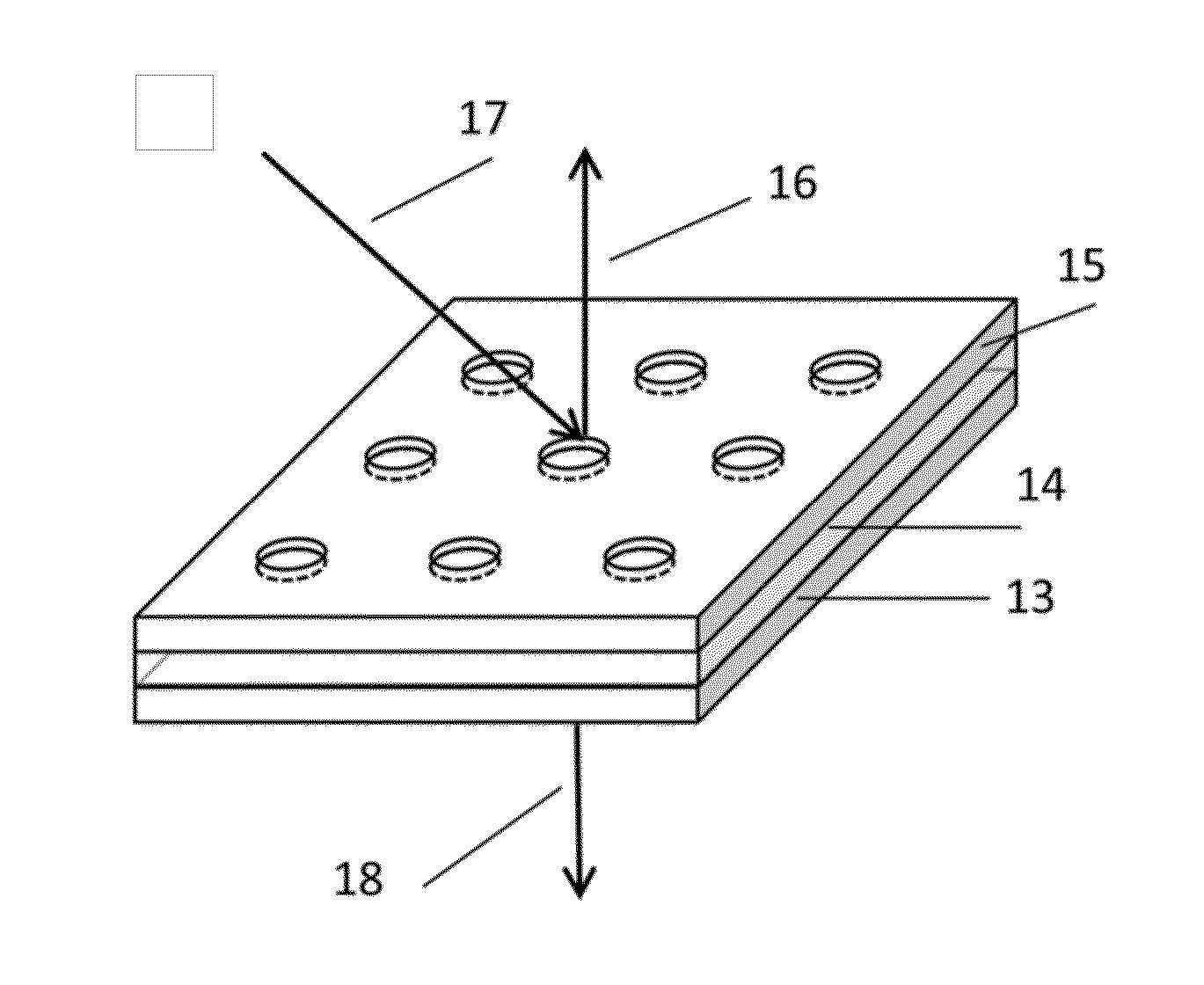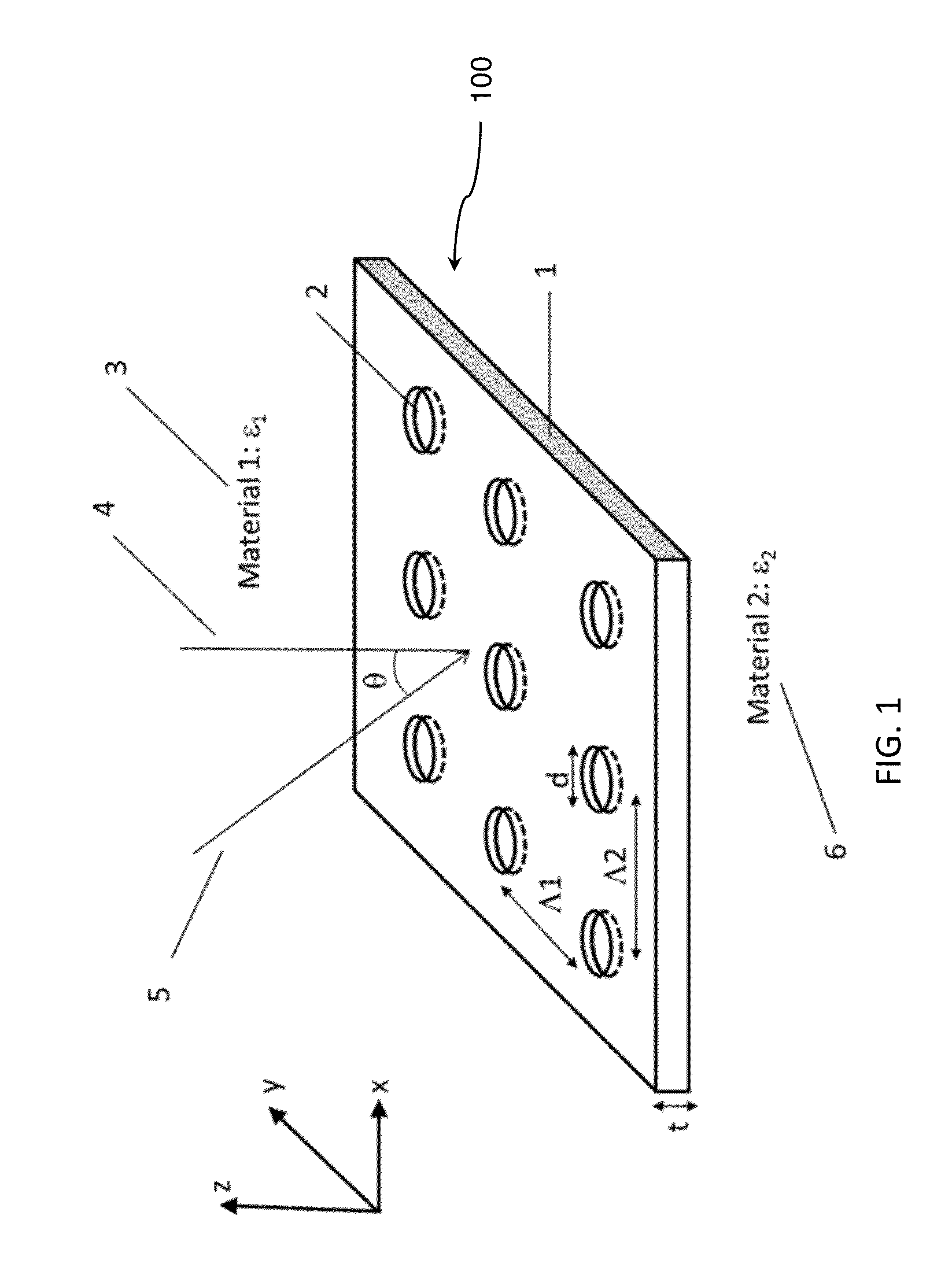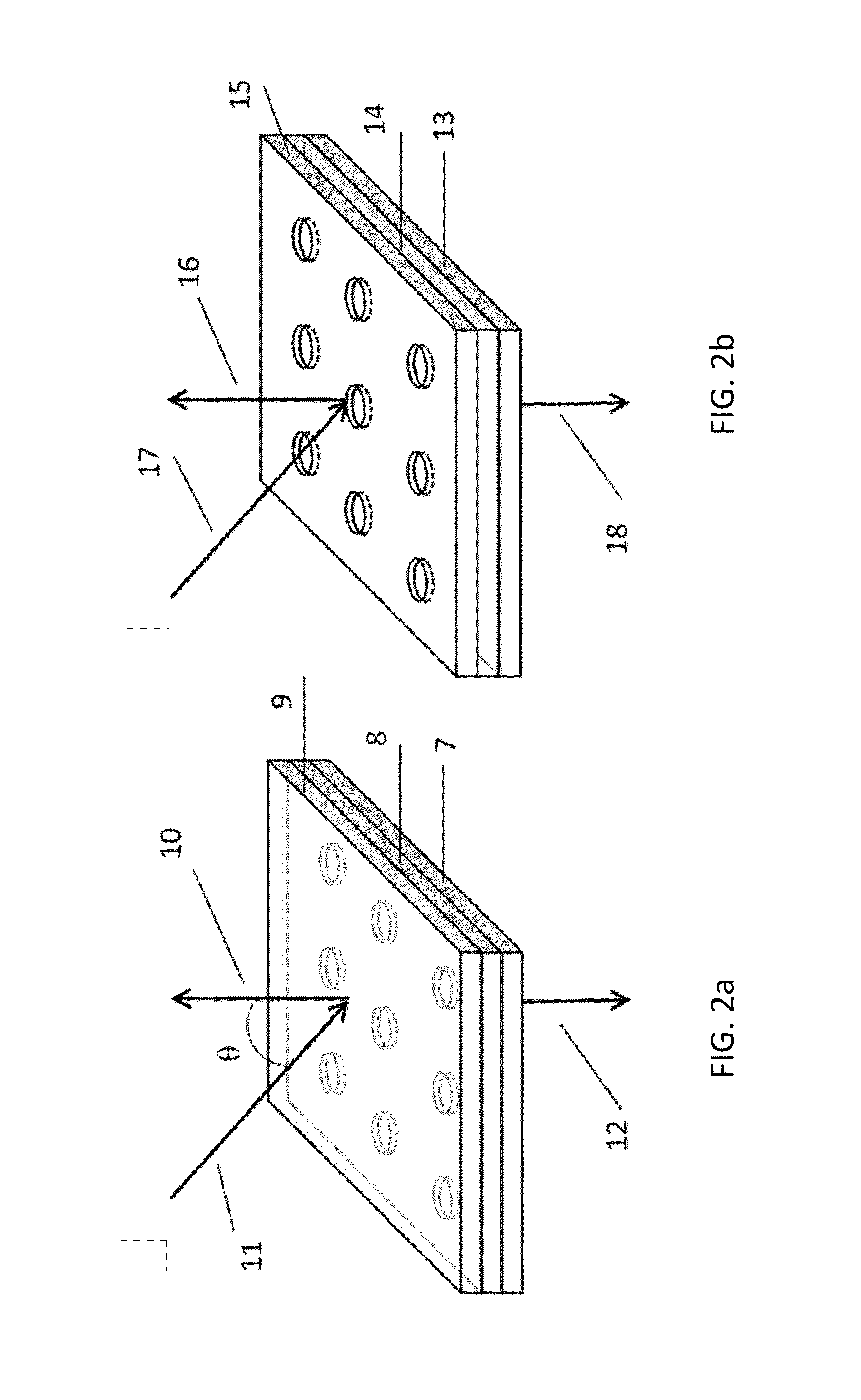Laser with sub-wavelength hole array in metal film
a metal film, sub-wavelength technology, applied in the direction of laser details, active medium materials, optical resonator shape and construction, etc., can solve the problems of high metal loss, unidirectional propagation, physical dimensions and optical mode volume affected by diffraction limit,
- Summary
- Abstract
- Description
- Claims
- Application Information
AI Technical Summary
Benefits of technology
Problems solved by technology
Method used
Image
Examples
Embodiment Construction
[0020]In conventional lasers, the direction of laser emission is controlled by reflective mirrors which provide optical feedback for light amplification. In contrast, the optical feedback in plasmonic lasers is provided by the intrinsic plasmonic resonance, and the emission direction is controlled by the critical angle of surface plasmonic coupling. In addition, the existence of high losses of metal is a large concern in the development of lasers, especially in the visible wavelength region. The invention described herein makes use of coupling effects among plasmonic modes supported in individual holes to provide an intense feedback for light amplification, leading to the creation of lasers with low threshold, high efficiency, and unidirectional propagation direction.
[0021]The method described in this application also advantageously supplies optical gain media near the metal hole array through a physical approach, and thus is free of the fabrication difficulty inherent in the chemic...
PUM
 Login to View More
Login to View More Abstract
Description
Claims
Application Information
 Login to View More
Login to View More - R&D
- Intellectual Property
- Life Sciences
- Materials
- Tech Scout
- Unparalleled Data Quality
- Higher Quality Content
- 60% Fewer Hallucinations
Browse by: Latest US Patents, China's latest patents, Technical Efficacy Thesaurus, Application Domain, Technology Topic, Popular Technical Reports.
© 2025 PatSnap. All rights reserved.Legal|Privacy policy|Modern Slavery Act Transparency Statement|Sitemap|About US| Contact US: help@patsnap.com



